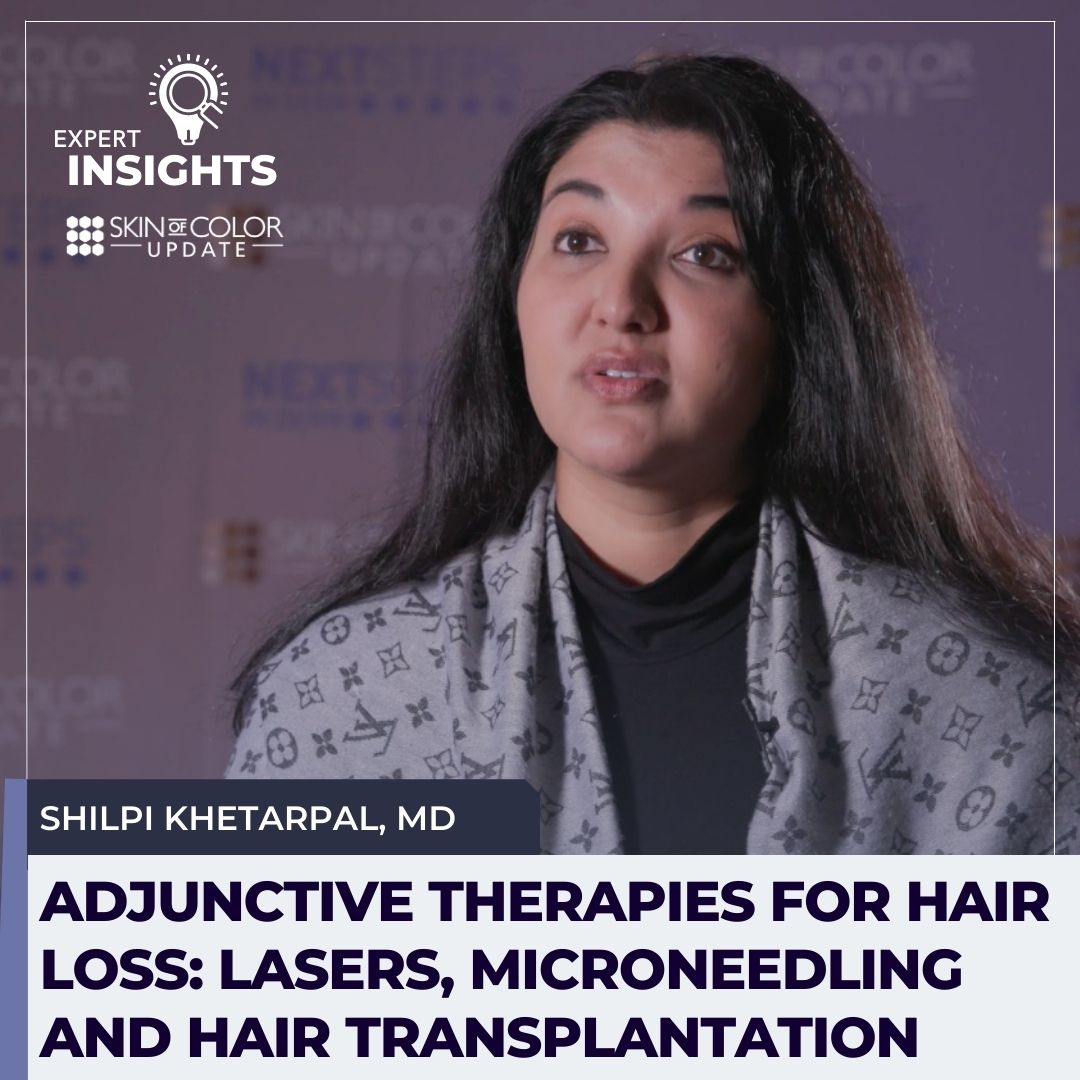Next Steps in Derm, in partnership with Skin of Color Update, interviewed Dr. Shilpi Khetarpal, dermatologist at the Cleveland Clinic. Watch as Dr. Khetarpal outlines the four categories of adjunctive therapies for hair loss and why clinicians should pair them with traditional medical treatments. Learn Dr. Khetarpal’s typical treatment regimen when using PRP in hair loss patients. Find out what clinicians should keep in mind when treating hair loss in patients with skin of color. While hair transplantation is the gold standard option, Dr. Khetarpal encourages clinicians to consider it as a last resort as there are less invasive hair loss therapies that research has shown to be effective.
Further Reading
If you want to read more about adjunctive therapies for hair loss, check out the following articles published in the Journal of Drugs in Dermatology:
The Utility of Platelet-Rich Plasma for the Treatment of Alopecia
ABSTRACT
Importance: Platelet-rich plasma (PRP) is a novel therapy for alopecia. Although the use of PRP remains under investigation, medical practitioners administer PRP for hair regrowth without quantitative evidence of clinical results.
Objective: Systematically review literature regarding PRP for alopecia.
Evidence Review: PRISMA guidelines were utilized to search the PubMed database in May 2019 with search terms “platelet rich plasma” and “hair”, “hair loss”, or “alopecia”. Manuscripts were included if they were written in English and described PRP treatment in human subjects with alopecia.
Findings: Sixty-one articles discussed the use of PRP as monotherapy, or in combination with other medical modalities, for the treatment of androgenetic alopecia (AGA), alopecia areata (AA), and cicatricial alopecia, ranging from level Ib to IV evidence. PRP results in significant increase in hair density and hair shaft width in AGA patients, with high rates of patient satisfaction and minimal adverse events. Data heterogeneity and limited number of well-designed, large-scale clinical trials were limitations of this review.
Conclusions and Relevance: Preliminary results regarding the use of PRP for AGA, AA, and cicatricial alopecias are promising. Physicians should be aware that current studies often report qualitative, rather than quantitative, clinical outcomes and should counsel patients regarding PRP treatment efficacy accordingly.
Examining the Potential for Koebnerization and Disease Precipitation in Cicatricial Alopecias
ABSTRACT
The treatment of primary scarring alopecias is challenging and patients may be susceptible to koebnerization. This predisposes cicatricial alopecia patients to worsening of their disease following procedural treatments or interventions. Research and recommendations surrounding the risk for koebnerization within scarring alopecias is extremely limited. Using a comprehensive literature review, we summarized the risks of procedures in potentially koebnerizing alopecias. We evaluated the risk not only with procedural treatments, but also with common elective cosmetic procedures and potentially trauma-inducing hairstyling techniques. Although additional studies are needed to better elucidate the risks of procedural treatments within primary scarring alopecia, we believe this review of the current evidence and expert insight will benefit healthcare providers and patients alike to help guide treatments in this challenging patient population.
Did you enjoy this video interview? Find more here.

